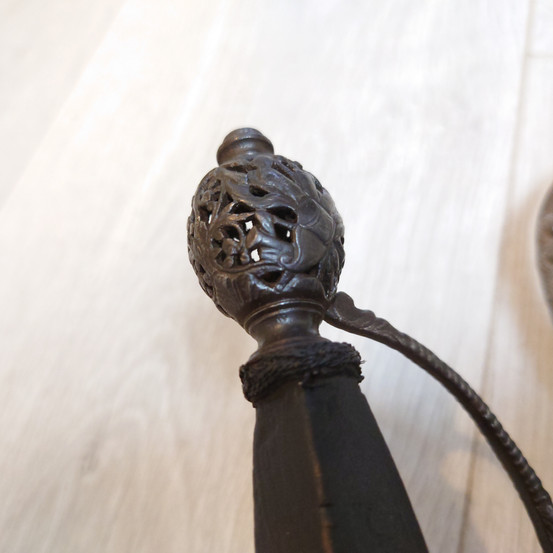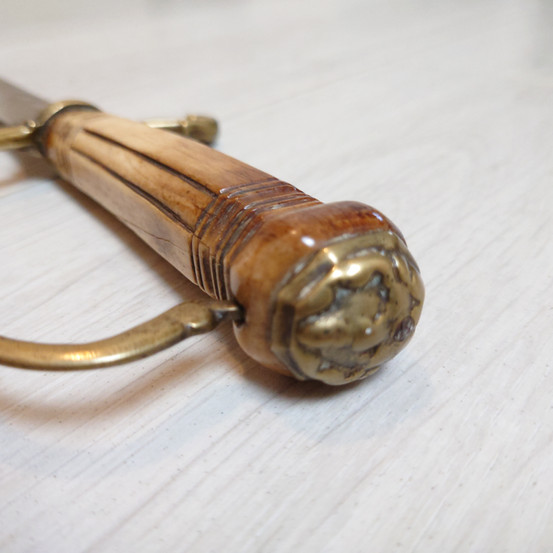A Study On Smallswords
- thierrytheswordguy
- Apr 8, 2021
- 4 min read
Updated: Apr 15, 2021

To put it plainly smallswords are some of the most versatile swords out there. They emerged in the tail end of the Renaissance to replace the rapier and were used as civilian sidearms, hunting weapons, the officer's battlefield sword as well as a badge of office or item of court dress.
These swords are the last true mass-produced non-regulation European swords for all these purposes before regulation swords took over.
Over the course of this article, I will be giving some examples and opinions on the wide varieties of subtypes of smallswords.
Firstly there are the transitional rapiers, these skirt the line between rapier and smallsword appearing first in the 17th century. These are rapiers that have the features of both rapiers and smallswords.
However when the majority of people I speak to hear smallsword they associate the word with the court or dress sword, these are usually rather ornamental pieces that were used through to today, diplomats and local officials still wear it in their dress uniforms.
Whilst the dress swords utilised from the 17th century through to modern-day weapons they are designed as accessories that symbolise the office or rank of the wielder and are part of a formal outfit.
The right one here is a late Victorian diplomats sword, the one on the right is and whilst it is a functional sword it is potentially one of the swords designed and made by Matthew Boulton at the Soho Mint c1800 which were incredible fashion statements at the time. These pieces and the longevity of their use is what I believe has given smallswords their reputation as dress items.
An interesting and rare variation is the hunting smallsword, the hunting sidearm is often the domain of the hanger or short sabre but for the incredibly stylish and active a hunting smallsword was the way to go, often these just had hunting scenes decorating but this rarer example has a stunning organic hanger hilt with a near pistol grip curve.
Whilst many perceive the smallsword to be a genteel weapon they were also weapons of the battlefield and boarding decks, whilst looking delicate they most definitely were pieces of military hardware. Here there will be a showcase of the three "eras" of military smallswords.
From the mid 17th century through to the mid 18th the smallsword was one of the preferred weapons of the fighting officer alongside the broadsword and Walloon. These pieces dating to the early to mid 1700s are as viable in combat as they are as a piece of fashion but we can see some are more decorative than the others, these can have larger blades more akin to thin broadswords or thick rapiers of the 16th century.
This continued through to the end of the 1700s through the regulation revolution which made specific swords iconic uniform items. These two pieces are similar to the military patterns of the late 18th century but still distinctly the smallsword of the officer class.
The sword on the left has been shortened professionally to match the length of most hangers or short weapons, I believe it is for naval use, much like the 1805 midshipmen or master at arm's swords shortened to cutlass length.
In the centre there is a mid to late 18th century sword that is rather ambiguous, it has features that have made other collectors suggest it is Russian, French or English, it has a deep triform blade with no engravings. The sword is of a style seen in European military art as a sidearm for both Infantry and Naval officers of the 1760s through to the 1780-90s.
On the right the blue and gilt triform blade is likely for a British infantry officer, it is similar to a variety of 1760-70s military pieces used across Europe that featured a slot hilt, this variation has a deep hollow gound blade making it a formidable steel penetrating weapon that will also have the rigidity to block a larger blade.
Non-regulation "regulation" smallswords also coexisted with regulation swords. These three examples are 1786, 1788 and 1796 pattern British swords which through the choice of their owner had opted for a smallsword as their combat weapon of choice.
Non-regulation swords whilst rare were utilised often enough, these would be carried by people who prefer the thrust centric combat style learnt as youths or perhaps by soldiers who served before regulation patterns were imposed on officers.
Lastly there are heirloom blades, heirloom blades often utilised blades dating to the 16th and early 16th century. Fitting rapier blades, occasionally shortened to suit the hilt.
Firstly, the military sword shown earlier has a blade made by Heinrich Coel, a Solingen blade maker who manufactured blades both in Germany and Spain in the late 16th and to mid 17th century. The centre one I have not managed to translate but it is an older 17th century blade remounted, likely to keep with fashion, the name Colari I believe to be north Italian. The last sword here has a blade made in Toledo by one of the famed blade makers of the Renaissance, Francisco Ruiz, dating to c1550.
I hope this has helped anyone interested in smallswords, there will in the short future be a separate page where there will be the full stats of these swords plus some of these will be up for sale shortly so you might be able to enjoy them up close.
























































































Comments